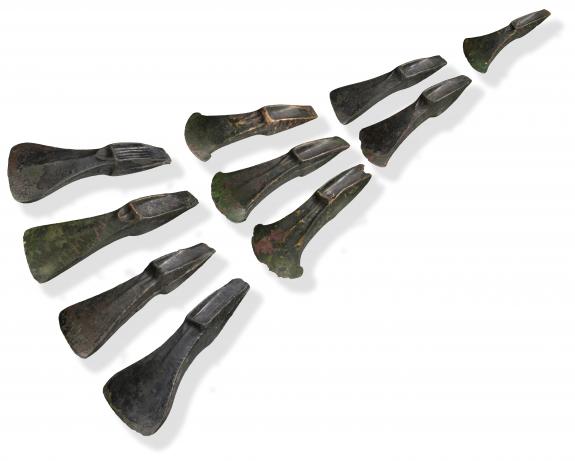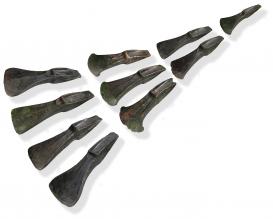From about 2500 BCE, people started to combine copper and tin on a regular basis, making metal known as bronze. I aim to show how the qualities of bronze guided the formulation of a shape-based economy, followed by a system of weighing.
I am intrigued how materials shaped people’s minds – via their hands. Craftspeople typically stress the importance of their raw material and how it guides them. I would like to understand how this ‘guiding’ works as it must be one of the routes through which materials influence minds. One of the ways in which I research this is to show how the particular qualities of bronze helped to develop the earliest weighing systems in Central Europe.
The process of bronze metalworking differs markedly from other – earlier – crafts. Wood and stone involve the removal of material which is why these are known as reductive technologies. Basketry, weaving, and pottery are additive technologies. Bronze is different in that it is a transformative technology. The raw material is melted down to a liquid state and poured into mold. Molds were the very first blue-prints, documenting the design of an object to be produced – and reproduced.
When you can cast one axe in a stone mold, you can cast many. This is exactly what Bronze Age people did. Archaeologists have discovered hoards containing up to hundreds of remarkably similar objects. And bronze is recyclable. This, together with copying are particular qualities of bronze that might have guided people towards the development of a shape-based economy and a system of weighing, in which identical bronze objects functioned as aes formatum.

Axes might have function as a form of proto-currency (aes formatum). These ten Bronze Age axes were found near Hoogeloon in the Netherlands, deposited together in a spring (Photo by Restaura 2011).

